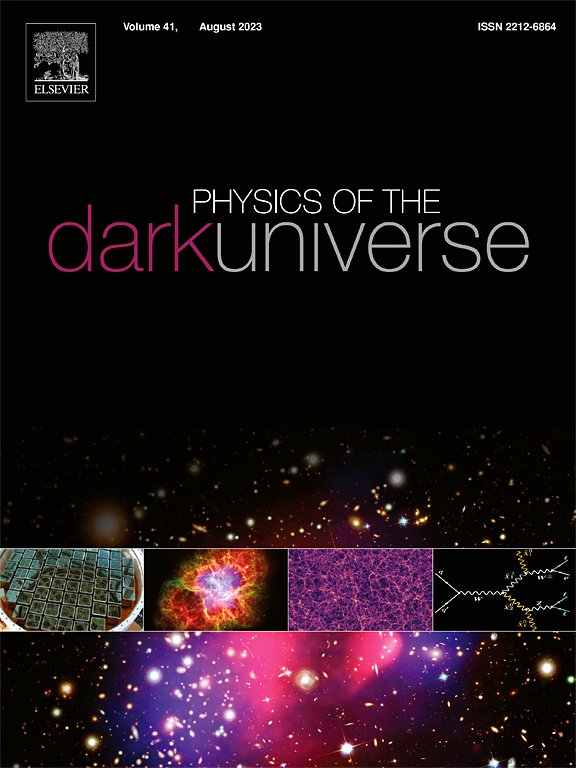Probing black hole evolution through homogeneous gravitational collapse in f(Q) gravity
IF 5
2区 物理与天体物理
Q1 ASTRONOMY & ASTROPHYSICS
引用次数: 0
Abstract
In this study, we investigate black hole (BH) formation resulting from the gravitational collapse of self-gravitating systems within the context of gravity. This work addresses key unresolved issues in theoretical physics regarding the end stage of gravitational collapse in massive stars. Building on the foundational research of Oppenheimer and Snyder (1939), we analyze a homogeneous collapsing system with perfect fluid distributions under gravity theory. To achieve this, we consider a homogeneous collapsing system with a spherically symmetric space–time geometry described by the FLRW metric with prefect fluid matter distribution. We have also discussed the junction conditions theory. By employing a parametrization of the expansion scalar, we derive an exact, model-independent solution to the Einstein field equations for the collapsing system. To explore the physical viability of the model we consider some known massive stars- , and with their known astrophysical stellar data (masses and radii). We discuss the formation of apparent horizon and space–time singularity, which further predicts BH as the final state of these collapsing stars. Additionally, we calculate the lifespans of these stellar objects, showing that higher-mass stars have shorter lifespans compared to less massive stars. We have also applied various test, including energy conditions, the equation of state, and stability criteria, and the adiabatic index. We have also presented a comparative analysis of our solution with standard Einstein’s General Relativity.
通过f(Q)引力的均匀坍缩探测黑洞演化
在本研究中,我们在f(Q)引力的背景下,研究了自引力系统的引力坍缩导致的黑洞(BH)的形成。这项工作解决了理论物理学中关于大质量恒星引力坍缩结束阶段的关键未解决问题。在Oppenheimer和Snyder(1939)基础研究的基础上,分析了f(Q)=Q+αQ2引力理论下具有完美流体分布的齐次坍缩系统。为了实现这一点,我们考虑了一个具有球对称时空几何的齐次坍缩系统,该系统由FLRW度量描述,具有完美的流体物质分布。我们还讨论了结条件f(Q)理论。通过对展开标量的参数化,我们得到了坍缩系统爱因斯坦场方程的一个精确的、与模型无关的解。为了探索该模型的物理可行性,我们考虑了一些已知的大质量恒星——R136a3、R136c和R99,以及它们已知的天体物理恒星数据(质量和半径)。我们讨论了视界和时空奇点的形成,进一步预测了黑洞是这些坍缩恒星的最终状态。此外,我们计算了这些恒星物体的寿命,结果表明,质量大的恒星的寿命比质量小的恒星短。我们还应用了各种测试,包括能量条件、状态方程、稳定性准则和绝热指数。我们还将我们的解与标准爱因斯坦广义相对论进行了比较分析。
本文章由计算机程序翻译,如有差异,请以英文原文为准。
求助全文
约1分钟内获得全文
求助全文
来源期刊

Physics of the Dark Universe
ASTRONOMY & ASTROPHYSICS-
CiteScore
9.60
自引率
7.30%
发文量
118
审稿时长
61 days
期刊介绍:
Physics of the Dark Universe is an innovative online-only journal that offers rapid publication of peer-reviewed, original research articles considered of high scientific impact.
The journal is focused on the understanding of Dark Matter, Dark Energy, Early Universe, gravitational waves and neutrinos, covering all theoretical, experimental and phenomenological aspects.
 求助内容:
求助内容: 应助结果提醒方式:
应助结果提醒方式:


